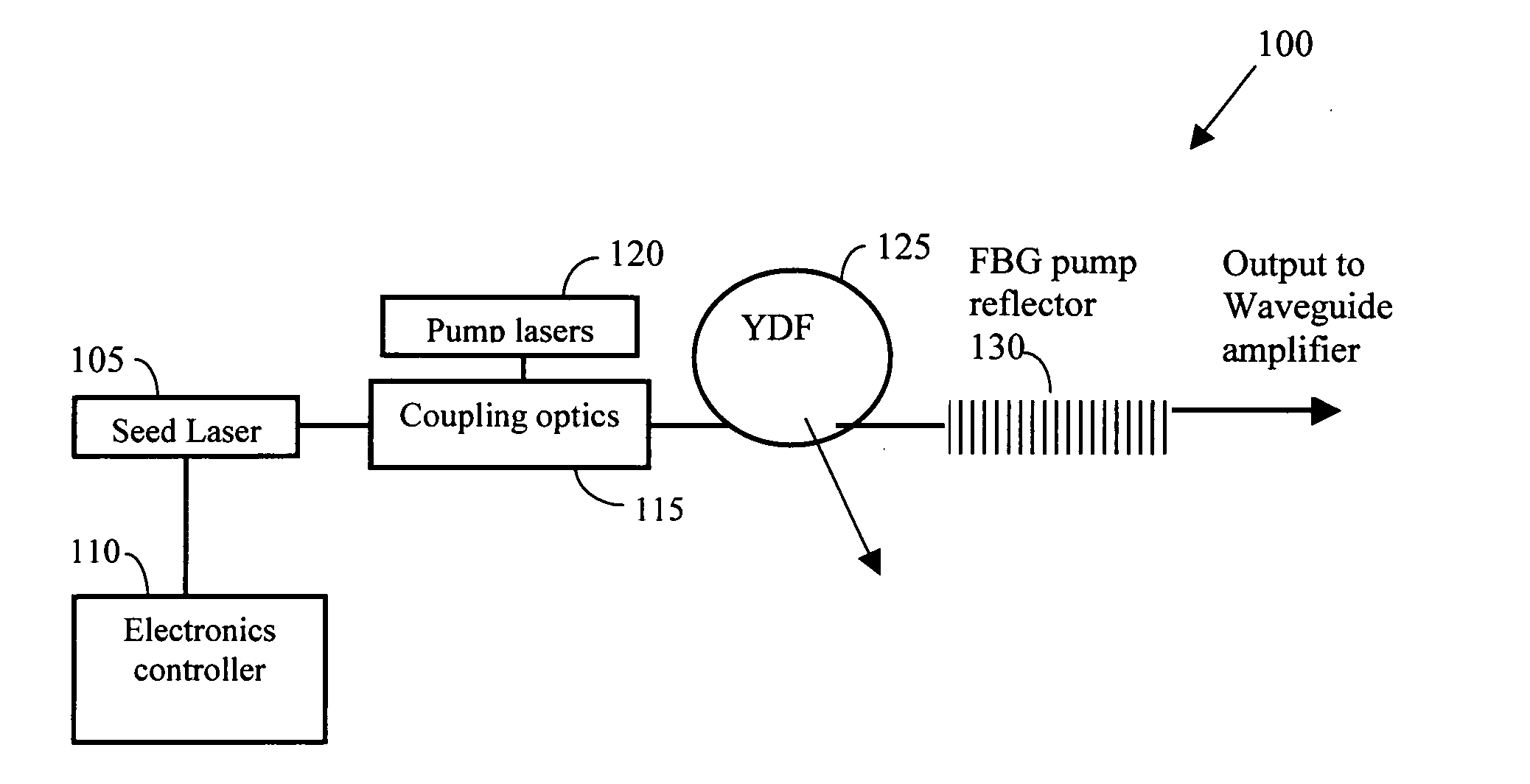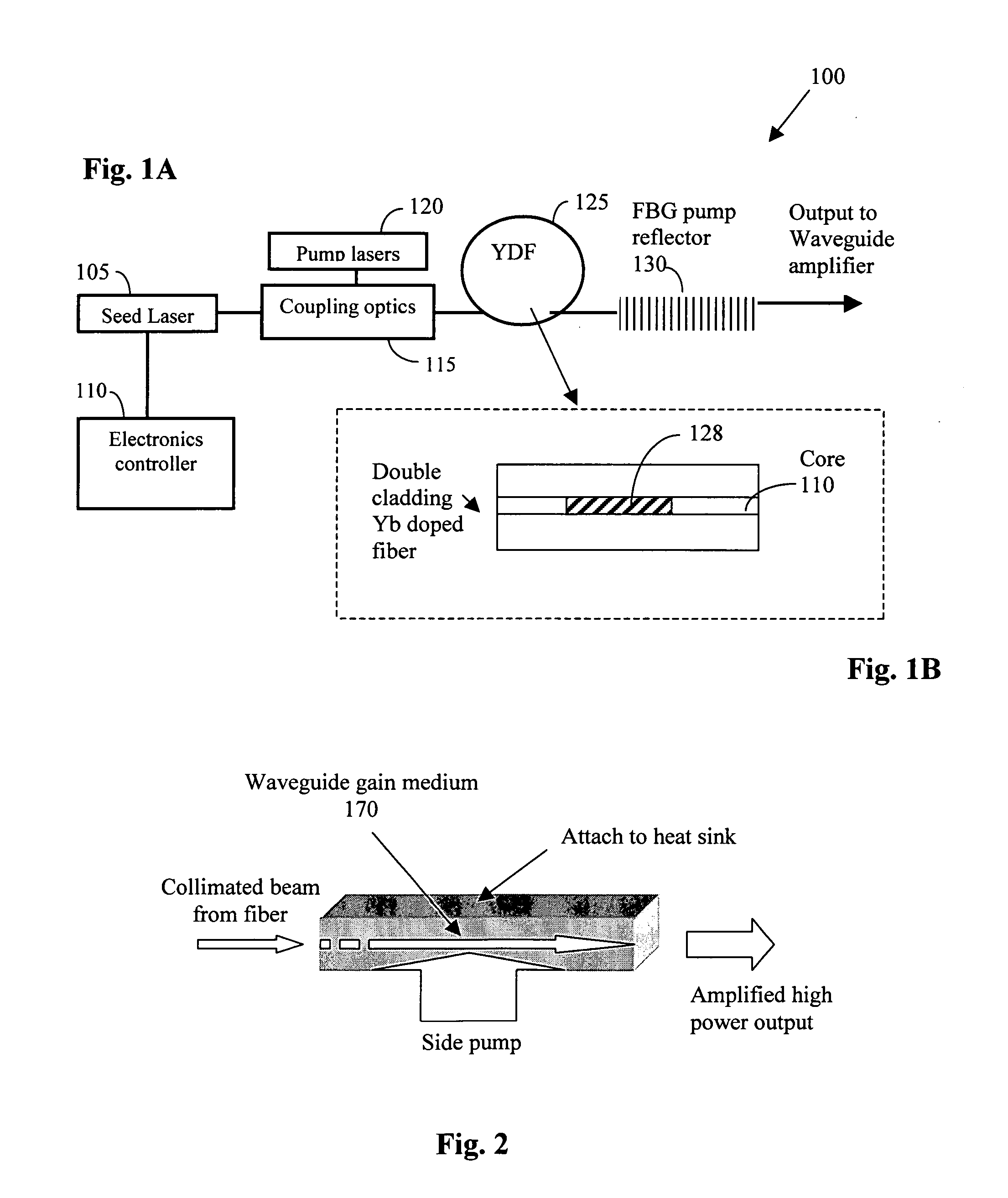Hybrid high power laser to achieve high repetition rate and high pulse energy
a high-power laser and high repetition rate technology, applied in the field of hybrid high-power lasers to achieve high repetition rate and high pulse energy, can solve the problems of difficult to achieve good pulse to pulse energy stability (ppes) and low time jitter, hinder the practical application of high-energy laser systems with high prr, and the q-switch system starts to encounter new problems, so as to reduce the thermal effect of scaling up the output laser
- Summary
- Abstract
- Description
- Claims
- Application Information
AI Technical Summary
Benefits of technology
Problems solved by technology
Method used
Image
Examples
Embodiment Construction
[0028]FIG. 1A shows a functional block diagram for illustrating a preferred embodiment of a fiber laser 100 this invention. The fiber laser system 100 includes a seed laser 105 operated at a wavelength of 1064 nm controlled by an electronic controller 110 to provide a programmable pulse repetition rate (PRR) and pulse width. The output from the seed laser 105 is transmitted through a coupling optics 115 that also coupled to the pump lasers 120 for projecting to an Yb-doped fiber (YDF) 125 for transmitting the optical signals to a fiber Bragg grating 130. The fiber Bragg grating 130 is applied to reflect the residual pump back. This enables the use of a short length of fiber to obtain a same level of output power and to reduce the effect of Stimulated Brilliouin Scattering (SBS) and Stimulated Raman Scattering (SRS). The pump lasers 120 generate a pump wavelength of 965 nm. The pump wavelength is particularly selected for pumping the Yb-doped fiber 125 in compensation and also to bal...
PUM
 Login to View More
Login to View More Abstract
Description
Claims
Application Information
 Login to View More
Login to View More - R&D
- Intellectual Property
- Life Sciences
- Materials
- Tech Scout
- Unparalleled Data Quality
- Higher Quality Content
- 60% Fewer Hallucinations
Browse by: Latest US Patents, China's latest patents, Technical Efficacy Thesaurus, Application Domain, Technology Topic, Popular Technical Reports.
© 2025 PatSnap. All rights reserved.Legal|Privacy policy|Modern Slavery Act Transparency Statement|Sitemap|About US| Contact US: help@patsnap.com



